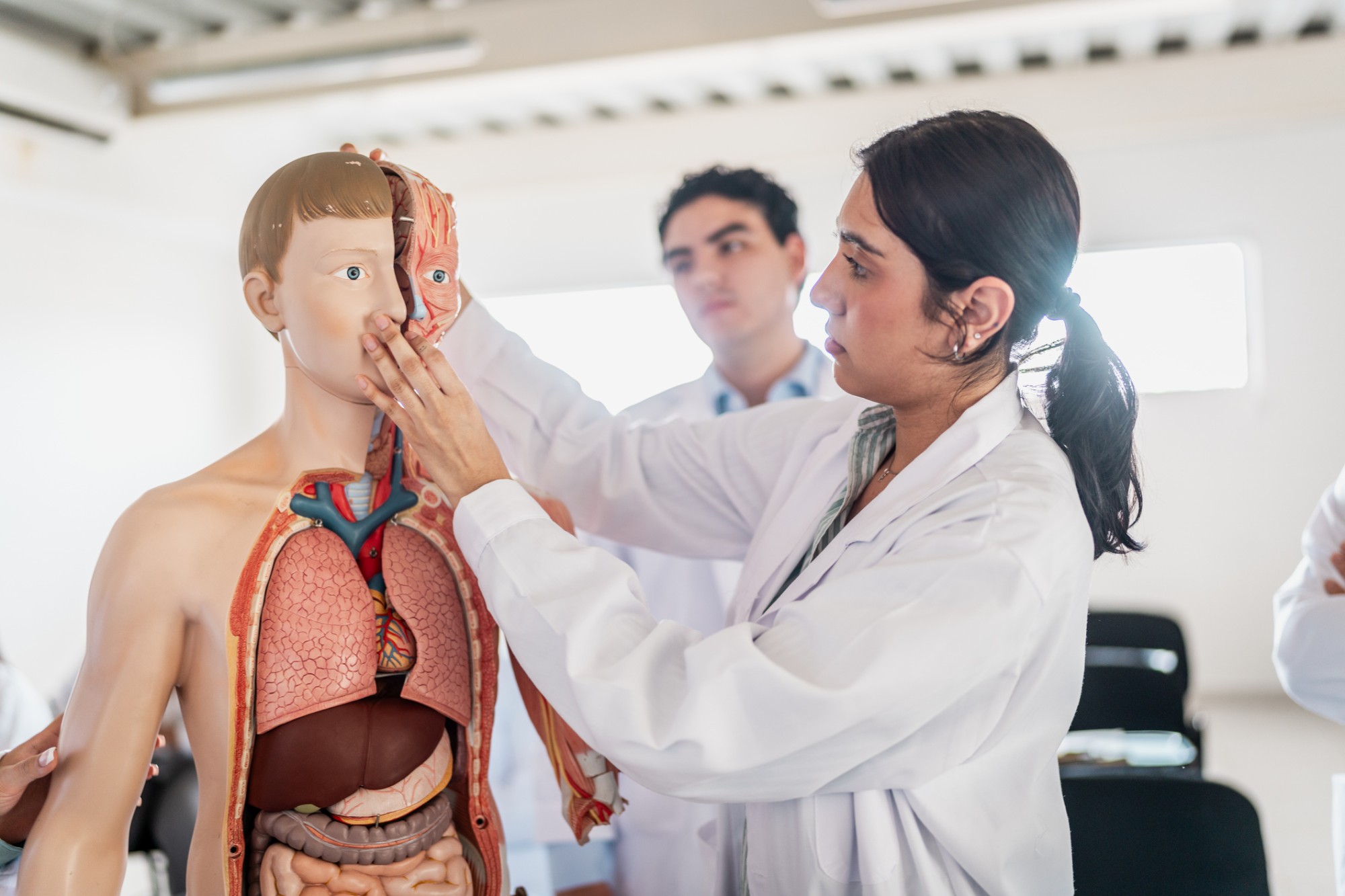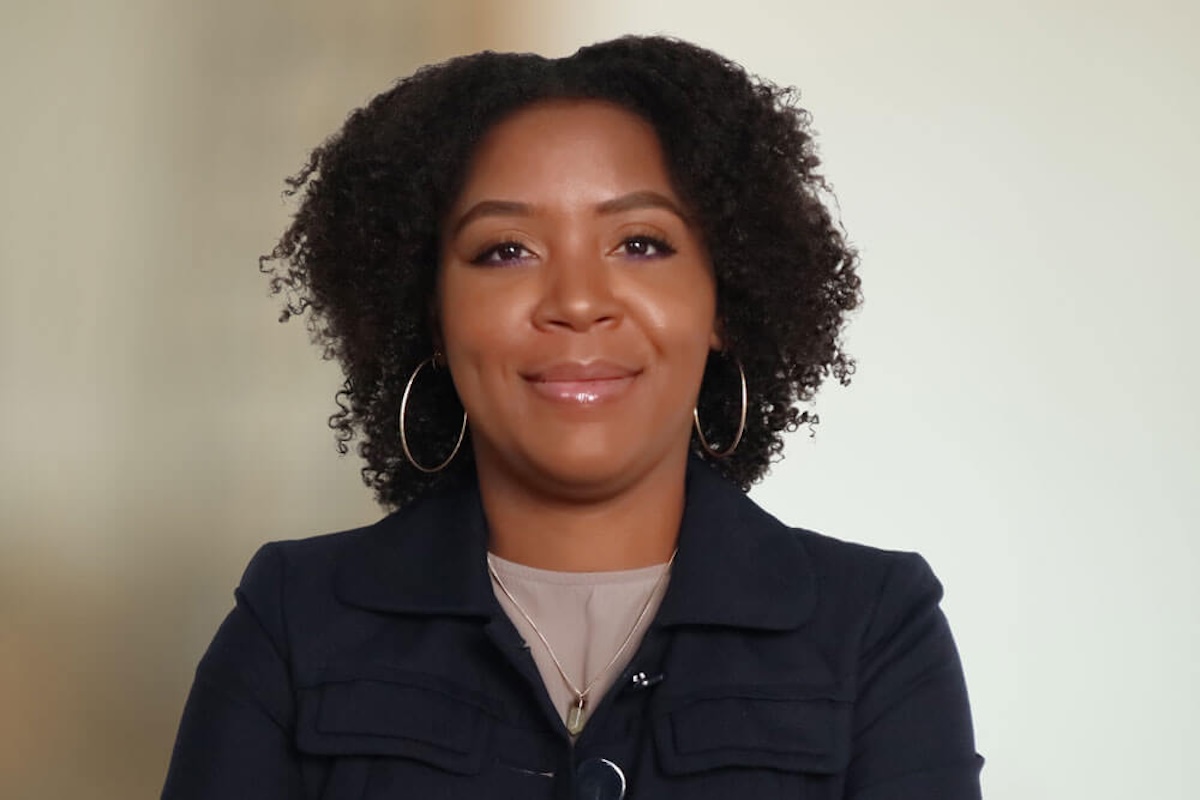The federal government has eliminated approximately $900 million in grant money from the Institute of Education Sciences (IES), canceling a wide range of efforts to develop and evaluate new approaches for improving education outcomes. At TC, the casualties include the Community College Research Center’s assessment of strategies adopted by different states to help community colleges recover from drops in enrollment, student loss of learning and other fallout from the pandemic. Below, a look at what the assessments accomplished and what goals remain unmet.
Caitlin Huynh has dreamed of working in healthcare since her family came to Alexandria, Virginia, from Vietnam when she was eight years old. “My dad said, ‘What are you going to do when we get there?’” she recalls, “and I said, ‘I’m going to be a doctor and help my community.’”
In 2021, inspired by a Vietnamese doctor who helped her parents understand how to respond to Covid, Huynh quit an unsatisfying corporate job to pursue her childhood dream. The road ahead was long and uncertain: Huynh had taken no science or pre-med courses in college, had little savings, and didn’t qualify for traditional financial aid because her taxes from the previous year reflected her corporate salary.
But during a visit to the Alexandria campus of Northern Virginia Community College, Huynh learned about a state-funded program called G3 (for “get a skill, get a job, get ahead”) that offers a 12-week, non-degree certification program to become a clinical medical assistant. Applicants whose annual household income is $110,000 or less are eligible to receive a last-dollar scholarship – one covering only the amount remaining after a student has tapped every other source of financial aid.

(Photo: iStock)
Huynh qualified for the scholarship, completed the program with certification from the National Healthcareer Association, and currently works at Forefront Dermatology, an outpatient clinic that takes referrals from nearby hospitals.
“The G3 scholarship really helped me,” she says. “Community college tuition is low, but I’d still have had to pay $4,000 in out-of-pocket [expenses], and I couldn’t afford that.” But equally important, she says, was the encouragement she received from the advisor who told her about G3. “She said, ‘Don’t worry about other people who might be further along in their careers. You have to start somewhere.’”
Now, Huynh is planning to apply for a two-year program to become a physician’s assistant — a classic example of how community colleges can create success for their students.
Asking What Works
G3 is a policy initiative of the Virginia State Legislature aimed at helping the Virginia Community College System (VCCS) reverse a 16 percent drop in enrollment since 2018, most of it attributable to the pandemic. Students in the program receive fast-track training, whether degree or non-degree, to work in education, healthcare, hospitality/culinary arts, information technology, public safety, or skilled trades/manufacturing/construction – well-paying fields in which many jobs have remained unfilled since the pandemic.
“The vision is for students to be aware of, afford and complete in a timely way programs that lead to in-demand, high-wage jobs, and walk away with little debt,” says Catherine Finnegan, Assistant Vice Chancellor for Institutional Effectiveness for the Virginia Community College System (VCCS). “Hopefully they’ll be positioned to be better citizens who can buy houses, have children, have healthcare.”
The G3 website boasts many individual success stories like Huynh’s, but VCCS has lacked the resources to evaluate whether that vision was being realized.
“State agencies by and large don’t have the research capabilities to do that,” Finnegan says. “My team can’t stop doing their regulatory work to better understand the quality of programs that build better outcomes and fulfill policymakers’ vision.”
In September 2022, TC’s Community College Research Center received a three-year grant from the federal Institute of Education Sciences to do just that.
CCRC researchers Nikki Edgecombe and Maria Cormier and their team traversed Virginia, holding focus groups and conducting qualitative interviews with administrators, faculty and students at the state’s 23 community colleges. In partnership with the University of Pennsylvania, they also began tracking labor-market outcomes.
Above all they’ve sought to answer two key questions: first, whether Huynh’s positive encounter with an advisor who steered her toward G3 has been typical for most students; and second, whether the last-dollar scholarship has been sufficient incentive for students to enroll and complete their programs. The answer to the second question is dictated by the answer to the first, because G3 has suffered from an invisibility problem that may be limiting its reach. For example, students must enroll in a G3 concentration before finding out whether they qualify for the last-dollar scholarship – a step they are unlikely to take unless they already know which career path they want to pursue and are aware the scholarship exists.
“So a student like Caitlin goes to the Northern Virginia website and says, ‘I think I want to enroll in a healthcare program,’” Cormier explains. “They connect with an advisor who points them to the medical assistant program and tells them they could be eligible for financial assistance. But another student, who doesn’t know what they want to do after graduating, might just submit the [FAFSA] and end up taking courses willy-nilly in a way that doesn’t lead to a job. Without an advisor, that student might not know that a job they’re currently in, say, operating a forklift, which pays $20 per hour, could be the first step toward a career in small engine design or logistics.”

(Photo: iStock)
Preliminary evidence from the CCRC evaluation suggests that G3 is attracting populations not previously interested in higher education – lower-income people, men, and students in manufacturing and trades programs. VCCS has also invested in its marketing efforts for G3, deploying information campaigns and more advisors to make students aware of the program.
But the evaluation of the labor market outcomes piece – whether G3 students are ultimately ending up in the fields the program targets, in jobs that employers need to fill – remains incomplete. Meanwhile, the IES has also scrapped a broader initiative, called the Accelerating Recovery in Community Colleges (ARCC) Network, of which G3 was just one part. That grant was funding CCRC to co-lead a network of researchers at TC and several other institutions in assessing pandemic recovery strategies in several states.
“The thinking was that IES and the field and the country could get more out of IES-funded work if teams worked together, sharing their findings to determine best practices,” says CCRC Director Thomas Brock, who was previously the interim director of IES. “The goal with this project was to help the government make the best use of pandemic relief.”
An Uncertain Future
Cancellation of the two grants, as they were entering their third and final year, has left Brock and others working on the projects scratching their heads.
CCRC was planning to write and publish a synopsis of the project and its findings, and launch a dissemination effort that included social media outreach and a symposium at which all the ARCC Network partners were to present findings and share key takeaways.
“We got to the last leg of the race, and the investment has already been made,” Brock says. “What’s missing is the opportunity to convene, synthesize, to have a national impact.”
“We wanted to get this out the door because G3 is an ongoing pathway. We want to share the information, throughout Virginia and nationally,” says Edgecombe. “Without our final report, we have no way to share our findings with colleges, who want to know: Is this worth our money?”

At CCRC, a dozen Postsecondary Education Applied Research (PEAR) Fellows like Pascale Mevs (Ph.D. '27) have provided key research support on projects like the Accelerating Recovery in Community Colleges (ARCC) Network and the G3 assessments while training in advanced quantitative analysis. Mevs, a community college graduate herself, is writing her dissertation on how adult education and workforce development programs at community colleges can contribute to closing racial, income and wealth gaps. (Photo courtesy of Pascale Mevs)
Finnegan, the VCCS Assistant Vice Chancellor, laments the lost opportunity to spend a third year evaluating G3. “It takes three years for a program to get traction — for the word to get out, for people to be aware, for marketing to take effect. The policymakers wanted those things to happen, but we’re unable to make the deeper dive to understand the mechanism behind success.”
Teachers College has submitted an administrative appeal to the Department of Education to restore CCRC’s grant funding, but beyond the impact on the G3 and ARCC Network grants, Brock worries about the broader implications of the funding cuts for academic research in general.
“Foundations are stepping up, but they’re already besieged and there’s just not enough foundation money in the world to replace all that the federal government has eliminated,” he says. “Also, the federal government plays a unique role in making research data and evidence available for the country. They have to care about all students, including those in public and private institutions.”

(Photo: iStock)
In addition, he says, the federal government also sets high standards to ensure common metrics and to be nonpartisan in its grantmaking.
“Foundations try to do that, too – to do otherwise would violate their tax status – but they have points of view. The federal perspective mattered because, until recently, it had bipartisan support. [Read a statement from Brock discussing the impact of the IES funding cuts.]
For Caitlin Huynh, the funding cuts literally hit home.
“My parents came here from Vietnam because there were more opportunities for me to get a good education. It makes me sad to think that the U.S. is cutting back on these kinds of opportunities. For so long, the U.S. has accepted people coming here from less fortunate circumstances so they could rise up through society. I hope in the future it doesn’t deter people pursuing their dreams here.”
